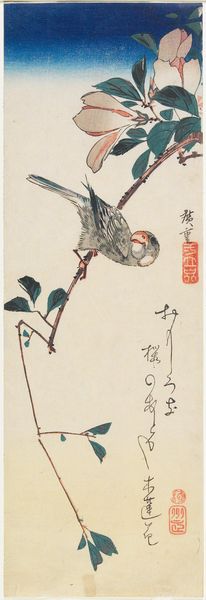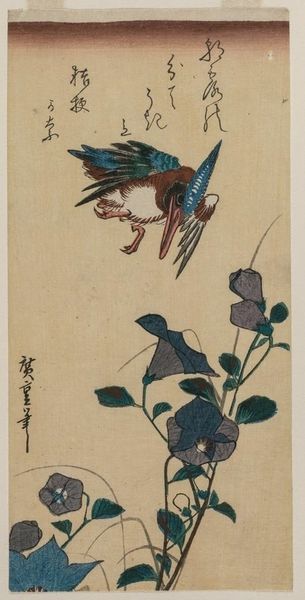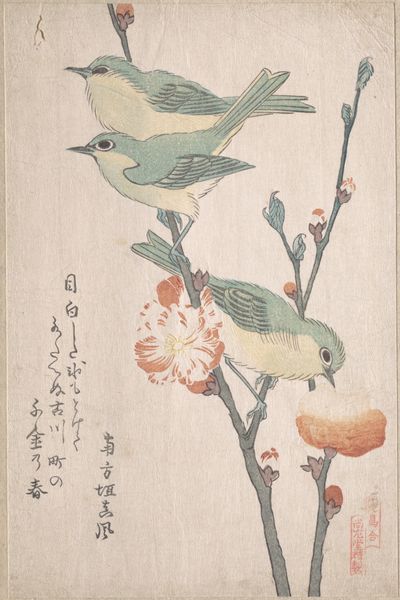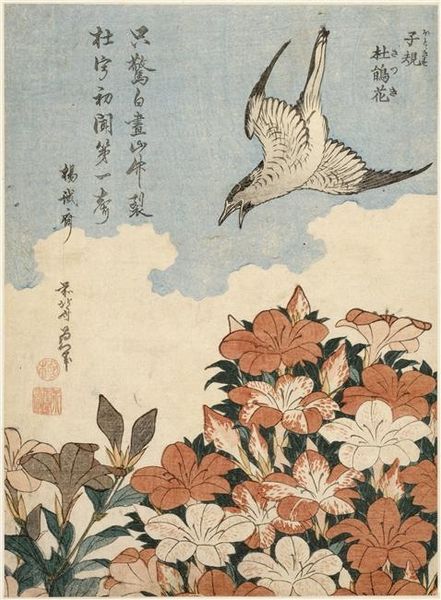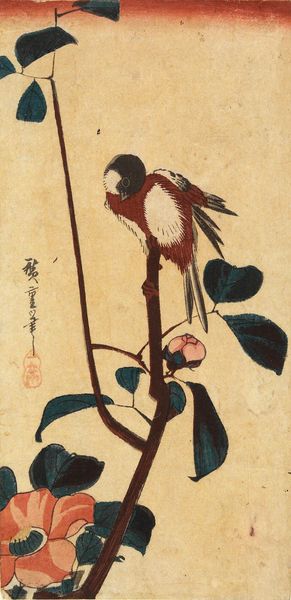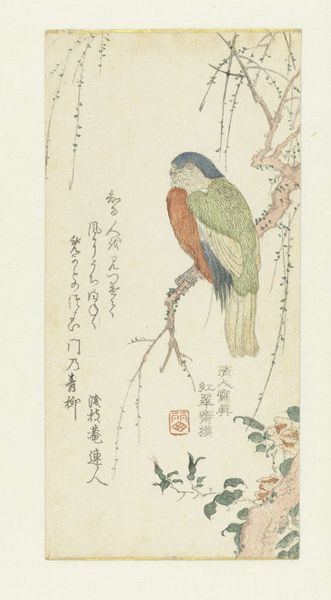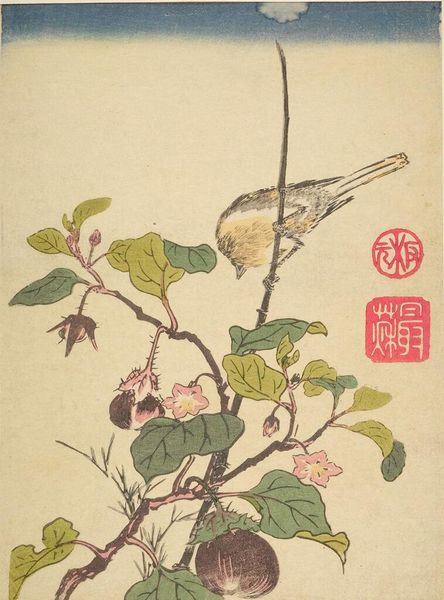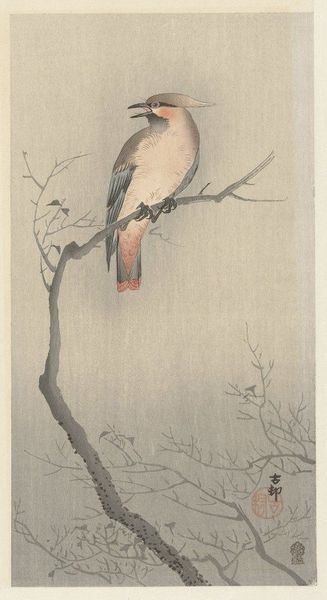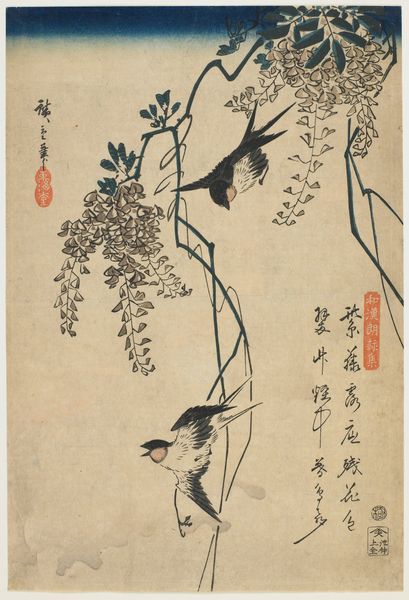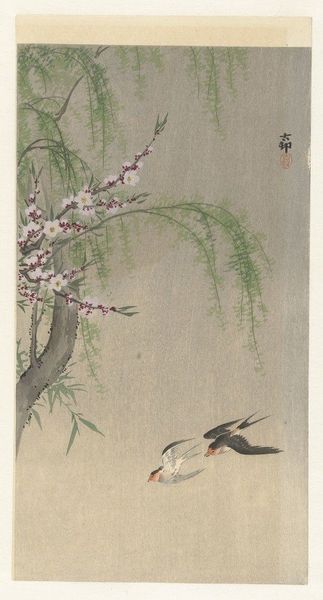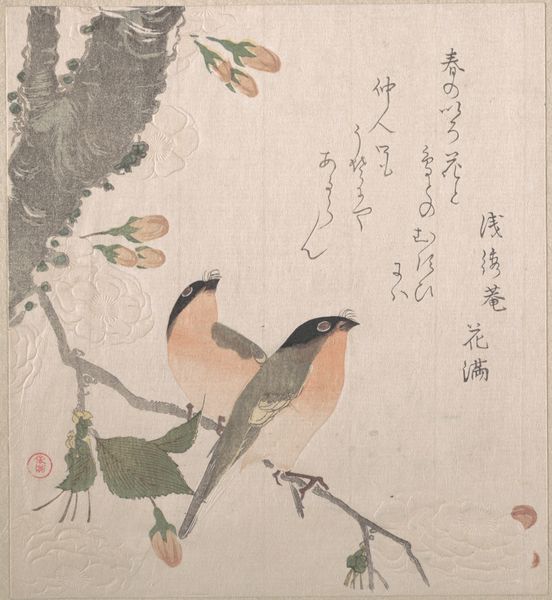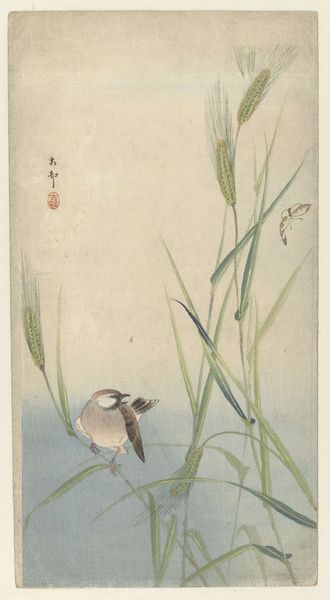
Copyright: Public Domain: Artvee
This is Utagawa Hiroshige’s “Black-Naped Oriole,” a woodblock print by an artist who lived through the late Edo period, a time of strict social hierarchy in Japan. Consider the art of this period as a form of cultural expression, a kind of visual poetry that often reflected the relationship between humans and nature. Hiroshige excelled in kacho-e, prints of birds and flowers. While seemingly simple, the print invites reflection on how nature is perceived and represented through the lens of culture. The oriole, perched delicately on a branch laden with blossoms, exists not just as a bird but as a symbol, deeply intertwined with Japanese aesthetics and seasonal traditions. The bird embodies the fleeting beauty of the natural world and reflects a longing for harmony and balance. In a society governed by rigid rules, art provided a space for emotional release and a deep connection to the natural world. Hiroshige's print becomes a mirror reflecting both the beauty of nature and the complex social emotions of his time.
Comments
No comments
Be the first to comment and join the conversation on the ultimate creative platform.
